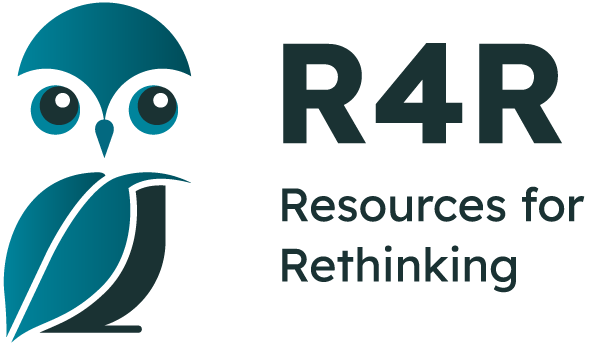- Home
- Tutorial
- Resource Guides
- Focus Areas
- LSF Programs
-
Professional
Development - Review Process
-
A project of LSF

Search for Resources
Buy Nothing Day:
Buy Nothing Day:
November 28th, 2025
Top R4R Picks
Resources for extending the learning
-
Avoid Fast FashionMiddle, Secondary
-
Fashion FootprintSecondary
-
Clothing 4 ClimateMiddle, Secondary
-
Perils of PlasticMiddle, Secondary
-
Trading TextilesMiddle
-
Plastics ChallengeMiddle, Secondary
-
Needs vs WantsElementary
-
Reduce, Reuse, RecycleElementary
-
-
Buy Nothing DayMiddle, Secondary
-
Sustainable Economics, Consumer ResponsibilityMiddle, Secondary
-
Fashion's Waste ProblemElementary, Middle, Secondary
-
The Secret Lives of ClothesElementary, Middle, Secondary
-
Fast Fashion's Environmental and Human CostsMiddle, Secondary
-
Circular Economy ExplainedSecondary
-
You Can Live Without Producing TrashSecondary
-
The WastelandSecondary
-
HappinessElementary
-
Where does e-waste end up?Secondary
-
Tuyen's Tremendous Trash Tour - Book 5Elementary
Spend a day without spending! The first Buy Nothing Day was organized in Vancouver in 1992 to draw attention to the role played by advertising in overconsumption in the developed world. It has since grown into an international effort involving over 65 countries to underscore the environmental, ethical and social consequences of consumerism. Celebrated in North America on the Friday immediately following US Thanksgiving, Buy Nothing Day marks what has traditionally become known as the first day of the Christmas shopping season. Consider it a 24 hour detox from consumerism and an excellent occasion to tune into the serious effects of ‘what’ and ‘how much’ we buy are having on the environment and on those living in the developing world where much of what we consume is produced.
In anticipation of Buy Nothing Day, teachers and students from around the world can explore the benefits of consuming less, re-using more and challenging companies to put sustainability and quality of life ahead of profit.
WHY CARE ABOUT OUR HABITS AS CONSUMERS?
 Over 80% of the global population lives in countries that consume more resources than what their ecosystems can renew—a discrepancy known as an “ecological deficit.”^
Over 80% of the global population lives in countries that consume more resources than what their ecosystems can renew—a discrepancy known as an “ecological deficit.”^
- Wealthy countries like the US and Canada use more than their fair share of resources — if everyone lived like the average North American, we’d need five Earths!^
- Advertisers spend an average of $350 a year on every person in Canada to get us to buy their stuff. Annual worldwide spending on marketing continues to increase and will reach $4.7 trillion by 2025*
- More and more of the goods we consume are produced in developing countries where labor is cheap and fewer safeguards are in place to protect workers and the environment.
- Today’s consumption is undermining the environmental resource base of our planet. 60% of the Earth’s ecosystem services have been degraded in the past 50 years.**
- The raw materials and production methods used to make many of the products we consume have harmful side effects on the health of humans, wildlife and the environment.
- Fashion production accounts for 10% of total global carbon emissions. The industry dries up water sources and pollutes rivers and streams while 85% of all textiles go to dumps each year.***
- Consumers are constantly forced to buy excessive and unnecessary packaging used by manufacturers, box stores, and supermarkets to increase product appeal.
- Many of the materials used in product packaging cannot be re-used or recycled.
- While recycling is good for the environment, consuming less is even better.
*Martech
^Population Connection
**Center for Global Development
***Earth.org
Resources 4 Rethinking encourages students and teachers to participate in Buy Nothing Day. Top R4R Picks will connect you to some excellent resources to further explore issues related to consumerism.
